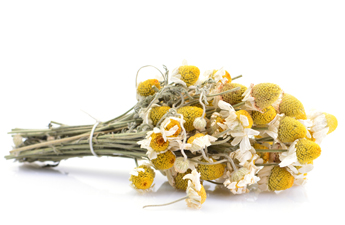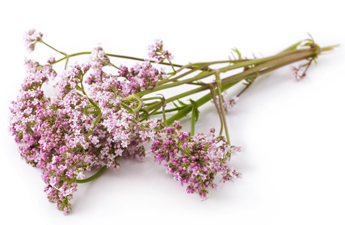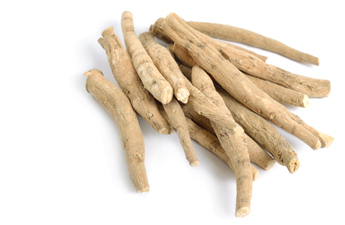Learn how to create your own herbal concoctions
This information is adapted from chapter 18 of The New Holistic Herbal: A herbal celebrating the wholeness of life (1990), by David Hoffman.
Part of the art of herbal medicine is knowing how to best prepare a herb in order for the medicinal properties of that plant to be best released. Herbs can be used both internally and externally, although usually they are more effective healing agents used internally. Infusions, decoctions, tinctures and dry preparations are the four main internal preparations, while washes, compresses, poultices and salves are the four main external preparations that would be used by the amateur.

INTERNAL PREPARATIONS
Infusions and decoctions are the most common preparations, as they are both water-based.
A general rule of thumb is that infusions are made with leaves and flowers, while decoctions are made with roots, bark, seeds and berries.

INFUSION
An infusion is the simplest form of herbal preparation: one we all know well. If you know how to make a cup of tea, you know how to make an infusion!
- Take a teapot (or any kind of glass, ceramic or stainless steel vessel) and put, on average, 1 teaspoon of dried herb per cup inside.
- Pour 1 cup of boiling water per person into the teapot.
- Let this sit, covered, for around 10 minutes.
- It is best to drink medicinal infusions as hot as possible.

DECOCTION
A decoction uses more heat to extract the active constituents from harder plant matter.
Most roots, bark, seeds, and woody parts need simmering to be effective medicines.
- Put 1 teaspoon of plant matter per cup into a saucepan (ceramic, enamel or stainless steel – never aluminium!). The plant matter should be powdered, crushed or broken into small pieces.
- Add 1 cup of water per teaspoon of herb to the saucepan, and bring to the boil.
- Once you reach boiling point, cover the pot, turn the heat down and simmer for 15 minutes.
- Strain and drink whilst still hot.

TINCTURE
Tinctures are concentrated forms of medicinal herbs, made by extracting the active constituents with a mixture of water and alcohol. This is the most common form of herbal medicine dispensed by herbalists and naturopaths, and although quite easy to make at home, people rarely do this.
It isn’t usually appropriate to recommend to people that they make their own tinctures (it is hard to get wrong, but more complicated than most people wish to get!), so thisinformation is largely included for your interest. Another thing to keep in mind is that it is easy to take too much of a medicinal plant when it is in a tincture form.
To make a tincture:
- Put about 120g of finely-chopped, dried plant matter into a large glass jar.
- Pour half a litre of 50% alcohol (some brands of triple-distilled vodka are this strong, otherwise get the strongest clear alcohol you can find) over the plant matter, close lid tightly and shake well.
- Keep the container in a dark place for 2-6 weeks (6 is best, but 2 is ok if needed), and shake periodically.
- After the allocated time, strain the tincture through a muslin cloth or fine mesh strainer. Squeeze out the excess liquid from the herb matter. Discard the plant matter and bottle the tincture in a dark glass bottle.
- As tinctures are much stronger than infusions or decoctions, much smaller doses are required, often only 15 drops or 1-2 mls twice a day. A good way to take tinctures is to put the dose into a cup of boiling water, as much of the alcohol is evaporated in this way.
- Interestingly, research has often shown that tinctures are most effective when started on a new moon and strained/finished on a full moon!

DRY PREPARATIONS
A lot of the herbs that we sell in our shops are sold in a dried and powdered form. There are 2 main ways to take powdered herbs: capsules and teas.
To make a tea with powdered herbs, mix a teaspoon of the herb in the bottom of a cup to a paste with a bit of honey or hot water. When you achieve a smooth paste consistency, add boiling water to fill the cup and stir thoroughly.
To take herbs as capsules, you must first buy empty vege-caps, and fill them with the herb. To do this, cover a plate with the powdered herb and take the halves of the capsule apart. Move the halves of the capsule towards each other through the herb powder, filling them in the process. Push the halves of the capsules together to close.
Generally speaking, 4 caps need to be taken together to equal 1 teaspoon of herb matter.
Capsules have the advantage of being easy and convenient, especially for bitter-tasting herbs (although this may miss out on some of the benefits of bitter herbs which start in the mouth!). The disadvantage of capsules is that the herbs inside them are much harder to assimilate into the body than preparations made with hot water or alcohol.

EXTERNAL PREPARATIONS
External or topical remedies are best used for localised skin or muscle complaints, although as the skin is capable of absorbing medicinal constituents, they can be useful for more general complaints as well.

WASH
The simplest way to use herbs externally for the skin is to prepare an infusion or decoction (depending on the herb) as per the instructions above, and wash the affected area three times a day for 3-7 days. You can also pour a litre of infusion/decoction into a bath full of hot water and soak in the mixture for a full-body effect.

COMPRESS
A compress is a more concentrated application than a wash, but also very useful to accelerate healing of the skin. Compresses are commonly used for wounds, eczema, rashes, muscle aches and fungal skin infections.
- Make a litre of infusion or decoction, depending on the herbs to be used.
- Use a clean cloth made of natural fibre such as cotton, linen or hemp.
- Soak a wad of the cloth in the hot infusion/decoction and place on the affected area.
- The heat is an important part of this remedy, so either change the compress as it cools, or place a hot water bottle on top of the cloth to keep it warm.

POULTICE
A poultice is similar to a compress, except that it uses the whole plant matter and not just the liquid extract. Poultices are commonly used for bruises, sprains, inflamed organs,skin complaints and for drawing pus out of infected wounds.
- Use the bruised fresh herbs or powdered dried herbs, which have been mixed to a mush with hot water.
- It is useful to mix the herb matter with fresh aloe vera gel or castor oil, as this draws the active parts of the plants deep into the skin and underlying tissues.
- Apply the mix to the affected area and cover with an oiled cloth or plastic wrap to keep the moisture in. Keep it warm with a hot water bottle.

SALVES
Salves are useful preparations for regular application, as they are in the form of a cream. These are more complicated to make, and are best bought. Common herbs that are prepared as salves are camphor and peppermint for aching muscles, calendula for wound healing and fungal infections, and comfrey or arnica for bruises and broken bones.
Most Happy Herb Shops sell a few different salves that can be recommended to people if they require regular application of a herb externally for an extended period of time.

 Nextwave
Nextwave

